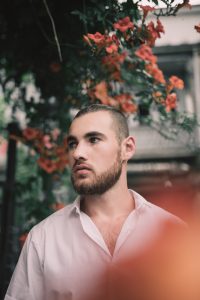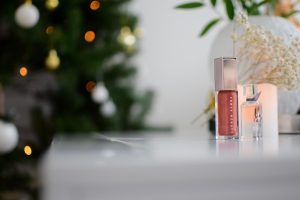“Easy, Breezy, Beautiful” and Gender-Inclusive
Published on September 25, 2020, at 3:21 p.m.
by Allison Cohen.
“Easy, Breezy, Beautiful, CoverGirl” … This slogan, from “CoverGirl,”:https://www.covergirl.com/ is rarely used by the brand these days, even though it has been used to identify the brand for decades. This change could be because beauty brands are ditching their old ways of branding and are transforming their consumer bases to include people of all genders. Today, gender-neutral beauty products have become mainstream, and the beauty brand demographic has shifted completely.
Not too long ago, makeup and skincare brands exclusively targeted young women. However, in 2016 makeup brands, such as CoverGirl, started launching campaigns incorporating male-centered models, building their consumer bases by using a more gender-inclusive approach. Popular brands, such as Fenty Beauty, are now driving engagement to strengthen their brands’ range in consumers. By appealing to people of all genders, shapes, sizes, and colors, the beauty industry has become a trade for the masses.

So, why have beauty brands updated their old, limited consumer groups and expanded to much broader ones? Well, expanding the beauty consumer base is beneficial to beauty brands and makeup consumers of all diverse backgrounds. Makeup and skincare brands get to interact with larger consumer groups who will spend money on their products. At the same time, makeup users, regardless of gender, feel represented and heard.
When YouTube makeup experts, such as James Charles and Jeffree Star, started making it big, companies, such as Jecca Blac and Milk Makeup, began to take advantage of gender-neutral groups using makeup products. Male makeup tutorials became so popular that videos started racking up millions of hits. By paying attention to current trends in the market, beauty and skincare brands were able to give consumers what they wanted.
With makeup and skincare branding becoming more versatile every day, the industry has taken a turn for inclusivity. Branding that involves racial diversity, as well as gender fluidity, has become a significant part of appealing to younger consumers. Brands like Non-Gender Specific (NGS) and Curology, both popular skincare lines, package their products with simple neutral colors and use men and women to model on their social media platforms.
The industry experts have focused less on changing the products themselves and more on changing the way people view the beauty industry. Changing the image of a beauty brand revolves around making consumers feel comfortable and represented. By celebrating all people using makeup, consumer relationships can continue to grow with each changing brand.

The beauty industry has successfully grown with consumers by branching out to non-gender-specific groups, and the world is taking note. With Jecca Blacs’ Instagram following up to 14,000 followers and Fenty Beauty at over 10 million, these gender-neutral beauty brands will continue to spark attention over social media platforms. Creating a brand that grows with the public is an important PR aspect that is engraved in every lasting business model. With gender roles diluting with time, it is imperative that businesses adapt to current social situations and continue to grow.
These PR tools can be applied to not only the beauty industry but also every industry that faces change. Adapting to this new era of inclusivity is what the future is all about. Some people say that the only constant thing in the world is change. Public relations revolves around adapting to change, and the gender-neutral beauty industry is an example of adaptations worth paying attention to.




